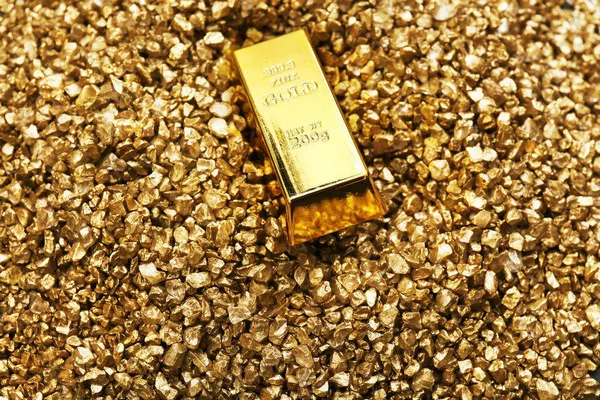Investing in gold has long been considered a safe haven for preserving wealth and diversifying portfolios. One key aspect of gold investment is understanding the price differential between gold bars and the spot price of gold. In this article, we will explore the various factors that contribute to the higher cost of gold bars compared to the spot price, ensuring that investors have a comprehensive understanding of the dynamics at play.
Definition of Spot Price
The spot price of gold refers to the current market price at which gold can be bought or sold for immediate delivery and payment. It is determined by factors such as supply and demand, geopolitical events, inflation rates, and currency movements. The spot price serves as a benchmark for pricing gold products worldwide, including gold bars.
Physical Gold Premiums
One of the primary reasons gold bars cost more than the spot price is the inclusion of premiums. These premiums encompass various expenses incurred in the production, distribution, and sale of physical gold. Unlike other forms of gold investment, such as exchange-traded funds (ETFs) or gold futures, which are traded electronically, physical gold requires additional costs for handling, storage, and transportation.
Refining and Manufacturing Costs
Gold in its raw form needs to undergo refining processes to achieve the level of purity desired for investment purposes. Refining involves removing impurities and alloying metals to reach the standard purity levels, typically 99.99% for investment-grade gold bars. These refining costs add to the overall production expenses, contributing to the higher price of gold bars compared to the spot price.
Minting and Marketing Expenses
Once gold is refined, it needs to be shaped into bars of standardized sizes and weights. This process, known as minting, involves casting or striking gold into bars and stamping them with relevant information such as weight, purity, and the mint’s logo or emblem. Additionally, marketing expenses incurred by mints or dealers to promote their gold bars further contribute to the premiums charged to customers.
Hedging and Warehousing
Hedging refers to strategies used by gold dealers and mints to mitigate the risks associated with price fluctuations. This involves purchasing futures contracts or options to lock in prices for future gold deliveries, ensuring a certain level of price stability. However, these hedging activities entail costs, which are passed on to consumers through higher premiums. Furthermore, warehousing physical gold also incurs expenses for secure storage facilities, insurance, and maintenance.
Market Demand and Supply
The premiums on gold bars are influenced by the fundamental principles of supply and demand in the precious metals market. During periods of high demand, such as economic uncertainty or geopolitical tensions, premiums tend to rise as investors flock to safe-haven assets like gold. Conversely, when demand is low, premiums may decrease as dealers offer discounts to stimulate sales. Similarly, fluctuations in supply, whether due to mining output, recycling rates, or central bank sales, can impact the premiums charged on gold bars.
Investment-Grade Bullion
Investment-grade bullion refers to gold bars or coins that meet certain criteria regarding purity, weight, and authenticity, making them suitable for investment purposes. These products typically command higher premiums due to their quality and reliability. Investors often prioritize investment-grade bullion to ensure liquidity and ease of resale in the secondary market. The premiums associated with investment-grade bullion reflect the assurance of quality and authenticity provided by reputable mints or dealers.
Dealer Profit Margins
Like any business, gold dealers and mints aim to generate profits from their operations. The difference between the spot price and the selling price of gold bars constitutes the dealer’s profit margin. This margin accounts for various costs and overheads incurred by dealers, including salaries, rent, utilities, and marketing expenses. While competitive pressures may limit excessive profit margins, dealers need to ensure their pricing remains sustainable to maintain business viability.
Economic Factors
Fluctuations in gold prices are influenced by a myriad of economic factors, including interest rates, inflation, currency movements, and macroeconomic indicators. For instance, periods of low-interest rates and inflationary pressures tend to boost gold prices as investors seek to hedge against purchasing power erosion. Similarly, currency depreciation can increase the attractiveness of gold as an alternative store of value. Economic uncertainties and geopolitical events can also drive demand for gold, affecting its pricing dynamics.
Buying Tips
For investors seeking to purchase gold bars close to the spot price, several strategies can be employed:
Research and Comparison: Conduct thorough research on reputable dealers and compare prices to identify competitive offers.
Bulk Purchases: Consider buying gold bars in larger quantities to negotiate lower premiums.
Timing: Monitor market trends and seize opportunities to buy during periods of low demand or price dips.
Avoiding Numismatic Premiums: Be cautious of numismatic or collector’s coins, which may carry higher premiums unrelated to the intrinsic value of gold.
Verification: Verify the authenticity and quality of gold bars through reputable sources or independent assays to avoid counterfeit or substandard products.
See Also What Does Gold Futures Mean?
Conclusion
Understanding the factors contributing to the higher cost of gold bars compared to the spot price is essential for investors looking to make informed decisions in the precious metals market. From refining and manufacturing costs to market dynamics and economic factors, various elements influence the premiums charged on gold bars. By incorporating buying tips and strategies, investors can navigate the complexities of gold investment and optimize their purchasing decisions for long-term wealth preservation and portfolio diversification.


